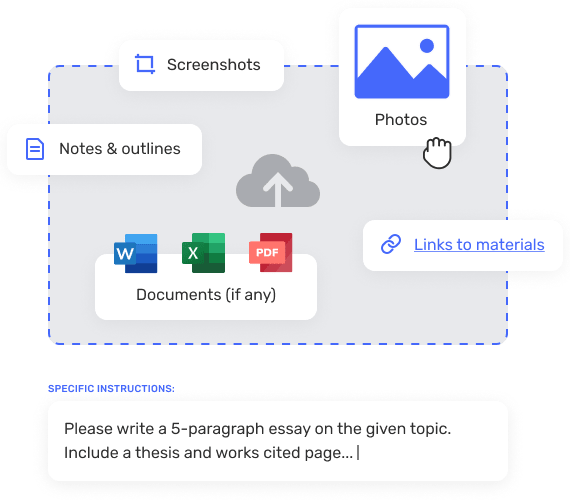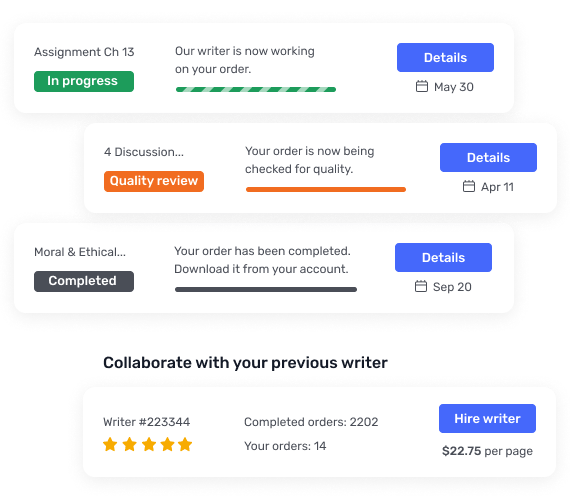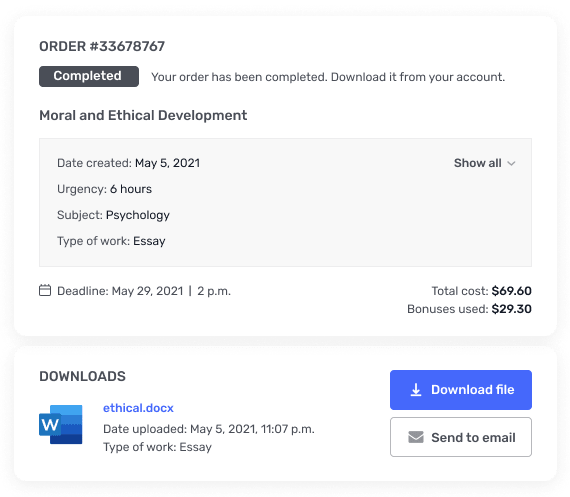The purpose of this exercise is for you to improve your writing skills
Term PaperPurpose: The purpose of this exercise is for you to improve your writing skills and tofurther your knowledge about the subject matter of this course.Content: The written assignment will be based on the Journal Club publications in theJournal of Neuroscience (go to: http://www.jneurosci.org/site/misc/ifa_features.xhtml).Briefly, in each issue of Journal of Neuroscience, graduate students or postdoctoralfellows (but not professors) can write a commentary about a journal article recentlypublished in the Journal of Neuroscience. These papers have 3 general components: a)brief overview of the background of the reviewed paper, b) critical evaluation of figuresand findings, and c) significance of the paper (praise or criticisms or combination ofboth). It is important that you go beyond authors’ comments on their study. Therefore,you will almost certainly have to read beyond the journal article that is the subject of yourcommentary. To see examples of these types of exercises go to Journal ofNeuroscience.Format: The paper should be written in APA style and 1000 to 2000 words in length (notincluding the cover page, reference section; abstract is not necessary).Evaluation: Your assignment will be evaluated on both content (~65%) and style (35%).How to go about your exercise?1. Select a drug of abuse that you want to explore (Note: do not select apsychiatric drug, such as Prozac or haloperidol or clozapine etc.): cocaine,amphetamine, heroin, fentanyl, remifentanil, oxycodone, morphine, nicotine,marijuana, MDMA, alcohol, salvia, ketamine, PCP, mescaline, psilocybin, LSD,barbituates, etc.2. Go to PubMed (http://www.ncbi.nlm.nih.gov/pubmed/) and type in key word(s)(e.g., salvia).3. Select an appropriate journal article. Stipulations: a) journal article must berecently published (2010-2016), b) it has to be a primary/experimentally basedarticle (i.e., you can not select a theoretical or review journal article) c)acceptable journals where the article is published: Journal of Neuroscience,Neuropsychopharmacology, Psychopharmacology, Neuropharmacology, Nature,Nature Neuroscience, Science, Behavioral Brain Research, European Journal ofNeuroscience, Brain, Behavioral Neuroscience, PLoS One, Biological Psychiatry,Molecular Psychiatry, Translational Psychiatry, Journal of Neurochemistry,Journal of Neurophysiology, Addiction, Addiction Biology, American Journal ofPsychiatry, Behavioral Pharmacology.4. Read your article several times and make notes.5. Explore other relevant literature (i.e., go back to PubMed)6. Write. Edit. Write. Edit!!!Term PaperPurpose: The purpose of this exercise is for you to improve your writing skills and tofurther your knowledge about the subject matter of this course.Content: The written assignment will be based on the Journal Club publications in theJournal of Neuroscience (go to: http://www.jneurosci.org/site/misc/ifa_features.xhtml).Briefly, in each issue of Journal of Neuroscience, graduate students or postdoctoralfellows (but not professors) can write a commentary about a journal article recentlypublished in the Journal of Neuroscience. These papers have 3 general components: a)brief overview of the background of the reviewed paper, b) critical evaluation of figuresand findings, and c) significance of the paper (praise or criticisms or combination ofboth). It is important that you go beyond authors’ comments on their study. Therefore,you will almost certainly have to read beyond the journal article that is the subject of yourcommentary. To see examples of these types of exercises go to Journal ofNeuroscience.Format: The paper should be written in APA style and 1000 to 2000 words in length (notincluding the cover page, reference section; abstract is not necessary).Evaluation: Your assignment will be evaluated on both content (~65%) and style (35%).How to go about your exercise?1. Select a drug of abuse that you want to explore (Note: do not select apsychiatric drug, such as Prozac or haloperidol or clozapine etc.): cocaine,amphetamine, heroin, fentanyl, remifentanil, oxycodone, morphine, nicotine,marijuana, MDMA, alcohol, salvia, ketamine, PCP, mescaline, psilocybin, LSD,barbituates, etc.2. Go to PubMed (http://www.ncbi.nlm.nih.gov/pubmed/) and type in key word(s)(e.g., salvia).3. Select an appropriate journal article. Stipulations: a) journal article must berecently published (2010-2016), b) it has to be a primary/experimentally basedarticle (i.e., you can not select a theoretical or review journal article) c)acceptable journals where the article is published: Journal of Neuroscience,Neuropsychopharmacology, Psychopharmacology, Neuropharmacology, Nature,Nature Neuroscience, Science, Behavioral Brain Research, European Journal ofNeuroscience, Brain, Behavioral Neuroscience, PLoS One, Biological Psychiatry,Molecular Psychiatry, Translational Psychiatry, Journal of Neurochemistry,Journal of Neurophysiology, Addiction, Addiction Biology, American Journal ofPsychiatry, Behavioral Pharmacology.4. Read your article several times and make notes.5. Explore other relevant literature (i.e., go back to PubMed)6. Write. Edit. Write. Edit!!!




